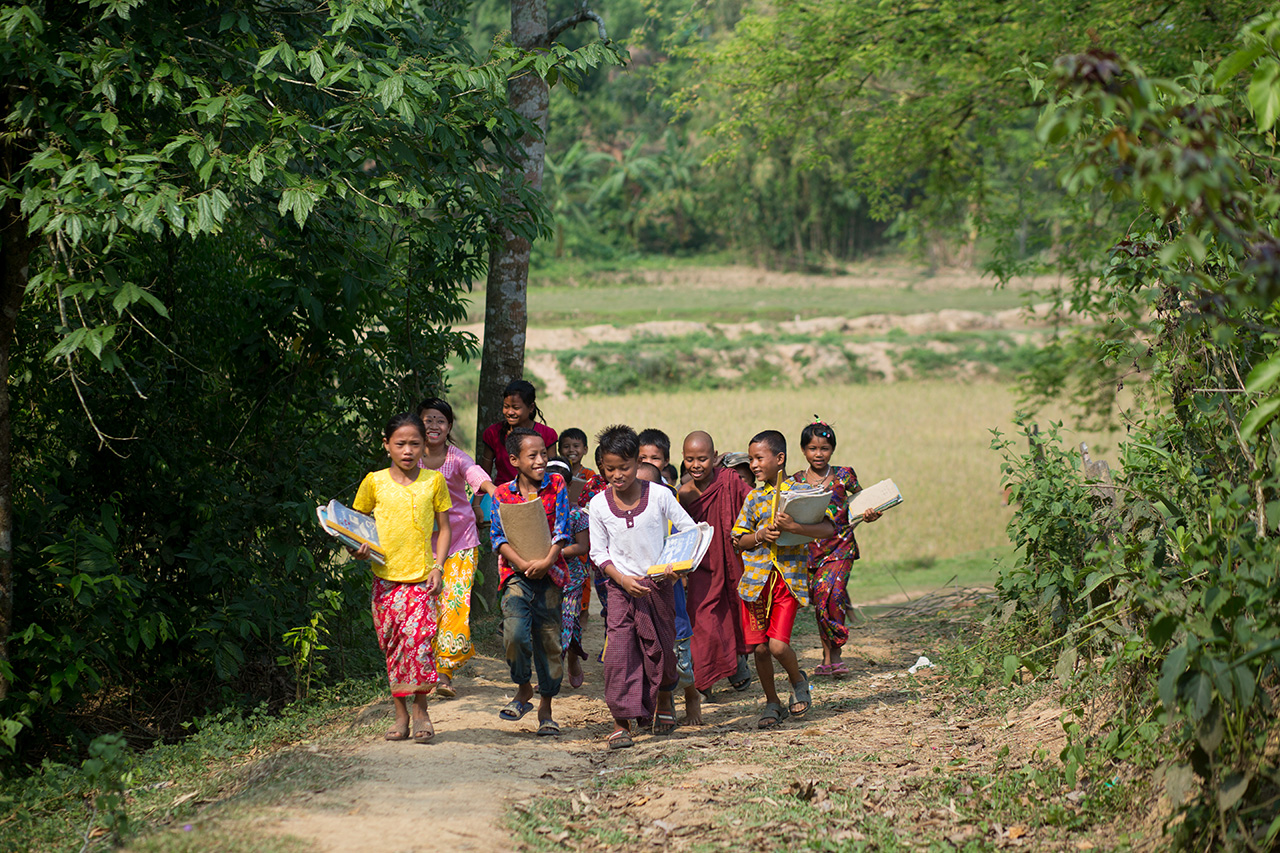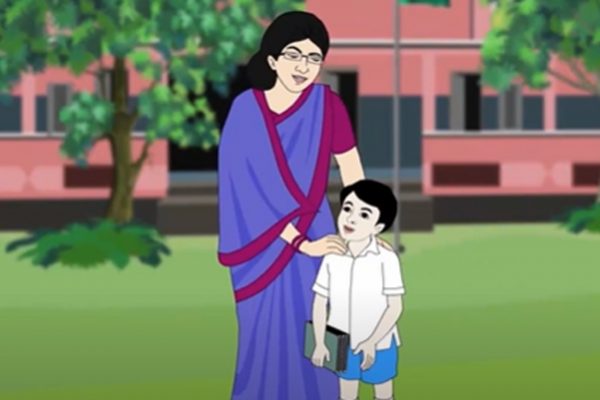Why learning should begin in your own language
Reading Time: 3 minutes
This International Day of the World’s Indigenous Peoples, we take a look at the importance of languages – and why learning should always begin in your own language.
Research shows that a child’s first language is the optimal language for learning throughout primary school years, and that children are more likely to drop out or fall behind in school if the language of instruction is not their first language.
I grew up surrounded by rolling blue-green hills in Rangamati Sadar of south-eastern Bangladesh. I still remember my first days of school – a very reputed school in the area. I remember starting and ending my classes feeling lost. I had little idea of what the teachers said. It sounded nothing like the language I was familiar with all my life – Chakma.
It soon became difficult for me to keep up with my lessons. I wondered if there was any school that taught in the language I spoke, and longed to be there instead.
I started to perform better at school only after a private tutor, who spoke Chakma, began to help me with my daily lessons. The medium of instruction in my school was Bengali. Majority of the children spoke Bangla – the state language of Bangladesh. I learnt Bengali, English, maths, social science, and religion.
After school, I would go back home and speak to my family and friends in my own mother tongue.
It was somewhat of a confusing experience growing up, navigating between two languages – a common reality for children from indigenous communities, and even more pronounced in remote parts of the Chittagong Hill Tracts.
The 1953 UNESCO declaration was a result of worldwide surveys of classroom instructions, where researchers found that media of instructions were in the dominant languages of nation-states or former colonial languages. Minority and indigenous languages were dismissed as mere dialects or local vernaculars.
The declaration proposed that “education is best carried on through the mother tongue of a pupil”. Every language is sufficient enough to give high cognitive skills to its users and there are no major or minor languages. Therefore, mother tongue instruction should be extended for as long as possible. A lingua franca, or a language of wider communication, cannot be a substitute for the mother tongue, and it should be avoided until the child fully acquired their mother tongue.
Bangladesh has made dramatic strides in expanding and improving education. However, children of ethnic minorities in the Chittagong Hill Tracts still fall behind compared to young learners across the country. Many do not have access to education simply because they do not understand the medium of instruction in schools. This is, in most cases, their first encounter with the dominant Bengali culture – and their first instance of being marginalised from it.

In the Chittagong Hill Tracts, children from 11 language groups which make up the minority population are surrounded by distinct local culture, heritage and language. There is often no chance to mix with other language speakers as they live in remote areas, communities further isolated because of differences of languages. When children reach primary school, they are expected to rapidly absorb and perform in Bangla, which is used as the only language for teaching. There are strong signs that linguistic and cultural gaps between children’s homes and school lives are at the root of extremely high dropout rates and poor achievement rates.
How can children of minority access national and international languages needed for social cohesion and economic progress, while still retaining their right to develop their cultural and linguistic heritage with an education they understand?

In our classrooms, one teacher speaks in Bengali while another helps to facilitate in their own language.
The only proven approach for teaching minority language speakers is mother tongue based multilingual basic education (MTBMLE). MTBMLE trains and supports pre-school and primary teachers to teach in the children’s first language, gradually introducing other languages in a structured way. It has dramatically improved learning outcomes across the curriculum in many countries, particularly in national and international languages and mathematics.
BRAC’s education programme started its education for ethnic children (EEC) in 2001 and multilingual education (MLE) in 2008 to adapt its non-formal teaching model to meet the unique needs of ethnic children. These schools provide non-formal, pre-primary and primary education in 56 ethnic communities across Bangladesh, so far graduating over 200,000 children.
Research on the EEC programme shows that children in these schools had significantly enhanced language, literacy and school readiness skills compared to children who had attended schooling in Bangla. Children were more enthusiastic about going to school, and shared their lessons with their parents at home. The model has brought significant changes in enrolment and reduced dropout rates, encouraging parents to send their children to school.
In 2010, the government included every child’s right to learn in their mother tongue in the National Education Policy. BRAC has been assisting the government and civil society in the Chittagong Hill Tracts to incorporating mother tongue as the medium of instruction, in what has been game-changing in getting education to every single child, even those living in remote communities.
There is an urgent need to establish more practical strategies to make education more inclusive and effective for all children. Learning cannot stop for children just because they belong to diverse, minority ethnic groups. Learning in the mother language has already resulted in dramatic changes in our corner of the world, and today we can only hope to see more global communities to follow so that no child loses access to education.
Chandra Chakma is a deputy manager of BRAC Education Programme.





